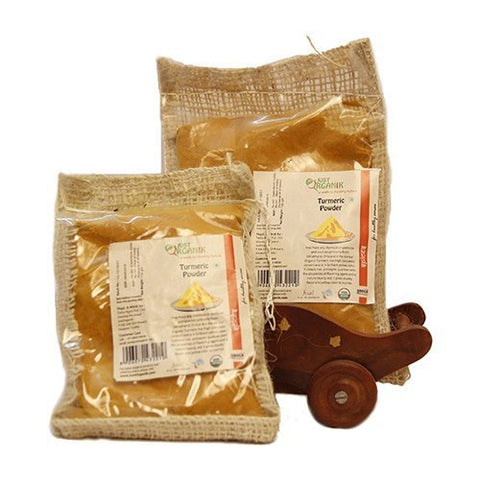
Image Source: youqueen
Turmeric, which has a brown skin, comes from the rhizome or the rootstock of Curcuma longa plant. Turmeric is used for seasoning in cooking, especially in Indian curries. It was traditionally called the “Indian saffron” in medieval England due to the fact that it has a deep and yellow-orange color.
Turmeric is a naturally found food preservative and is used to marinate chicken, fish and meat to enhance preservation and also to offset the stingy smell of the fish foods.
In India, the dried roots of turmeric, mixed with other spices, peppers and curry leaves are stored as curry masala powder and used in various dishes.
The powdered turmeric complements any preparation of vegetables or meats. It mixes well with other spices, herbs and powders and enhances the overall flavor, fragrance and above all the color of the dishes.
Turmeric houses many health beneficiary nutrients like potassium, iron, calcium, copper, manganese, zinc and magnesium. Potassium helps in controlling the blood pressure and heart rate while iron is essential for the production or red blood cells.
Since it comes from roots, it contains high level of Vitamin C which is a water soluble natural antioxidant. Turmeric is a very essential nutrient helping the body to develop immunity against foreign invaders and removing the harmful free oxygen radicals.
It is a rich source of many essential vitamins like pyridoxine or Vitamin B6, niacin, riboflavin and niacin, which helps prevent dermatitis.
The anti-inflammatory properties of turmeric have long been used by the Indian and the Chinese to treat an assortment of conditions which include flatulence, menstrual difficulties, jaundice, hemorrhage, toothaches, colic and cuts and burns amongst many others.
Curcumin, the main compound present in turmeric, and which imparts the deep orange color to turmeric, has antioxidant, anti-arthritic, anti-ischemic and anti-amyloid and anti-inflammatory properties, which helps in delaying the onset of Alzheimer’s disease.
Turmeric has found to be effective against arthritis, stomach pain, diarrhea, heartburn, stomach bloating and intestinal gas, loss of appetite, jaundice, gall bladder problems and liver disorders. It also helps in combating bronchitis, headaches, coughs and colds, fever, menstrual disorders and even cancer.
Turmeric itself does not contain any cholesterol but helps to control the bad cholesterol or LDL levels in our blood due to its antioxidant and dietary fiber content. Turmeric therefore, reduces the risks of coronary artery disease and strokes.
The chemical compound in turmeric, curcumin, stimulates the gall bladder to make bile. This in turn helps during digestion. Turmeric thus helps in reducing the symptoms of an upset stomach, gas and also bloating. Regular intake of turmeric also reduces the occurrence of irritable bowel syndrome.
Turmeric contains many essential oils like curlone, curumene, termerone, cineole and p-cymene, which find application in the cosmetic industry.
Turmeric, with its various uses as a condiment, as a healing agent and also as a textile dye, is an amazing herb. Its powerful antiseptic and anti-inflammatory properties have made it a precious herb. Click here and find out more about the wonderful benefits of turmeric.





